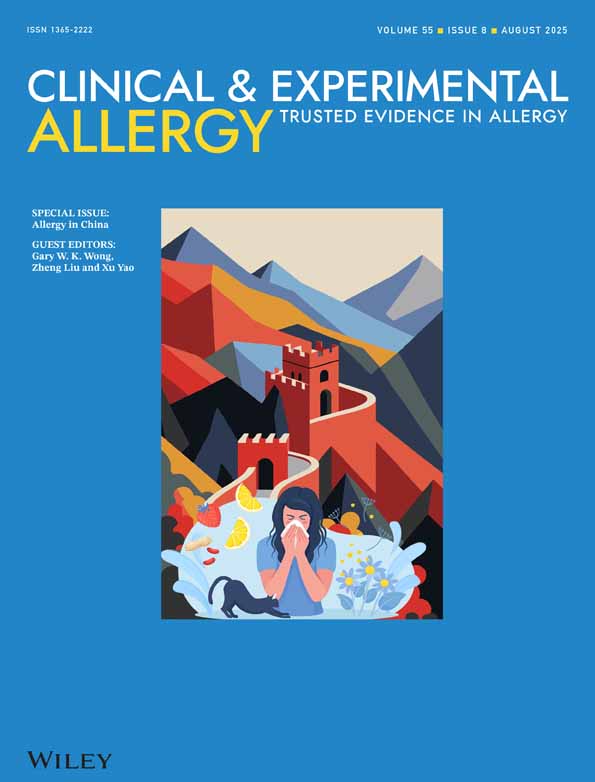Differential capacity of CD8α+ or CD8α− dendritic cell subsets to prime for eosinophilic airway inflammation in the T-helper type 2-prone milieu of the lung
Summary
Background Different subsets of dendritic cells (DCs), identified in mouse spleen by their differential expression of CD8α, can induce different T-helper (Th) responses after systemic administration. CD8α− DCs have been shown to preferentially induce Th type 2 (Th2) responses whereas CD8α+ DCs induce Th1 responses.
Objective To study if these DC subsets can still induce different Th responses in the Th2-prone milieu of the lung and differentially prime for eosinophilic airway inflammation, typical of asthma.
Methods Donor mice first received daily Flt3L injections to expand DC numbers. Purified CD8α+ or CD8α− splenic DCs were pulsed with ovalbumin (OVA) or phosphate-buffered saline and injected intratracheally into recipient mice in which carboxyfluorescein diacetate succinimidyl ester-labelled OVA-specific T cell receptor transgenic T cells had been injected intravenously 2 days earlier. T cell proliferation and cytokine production of Ag-specific T cells were evaluated in the mediastinal lymph nodes (MLNs) 4 days later. The capacity of both subsets of DCs, to prime for eosinophilic airway inflammation was determined by challenging the mice with OVA aerosol 10 days later.
Results CD8α− DCs migrated to the MLN and induced a vigorous proliferative T cell response accompanied by high-level production of IL-4, IL-5, IL-10 and also IFN-γ during the primary response and during challenge with aerosol, leading to eosinophilic airway inflammation. In the absence of migration to the MLN, CD8α+ DCs still induced a proliferative response with identical levels of IFN-γ but reduced Th2 cytokines compared with CD8α− DCs, which led to weak eosinophilic airway inflammation upon OVA aerosol challenge. Unpulsed DCs did not induce proliferation or cytokine production in Ag-specific T cells.
Conclusion CD8α− DCs are superior compared with CD8α+ DCs in inducing Th2 responses and eosinophilic airway inflammation in the Th2-prone environment of the lung.




